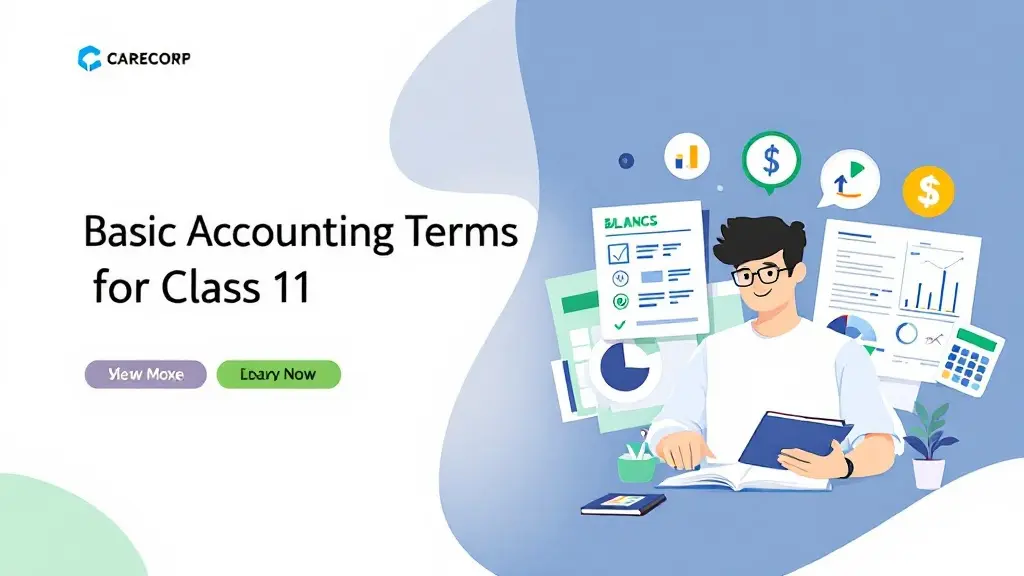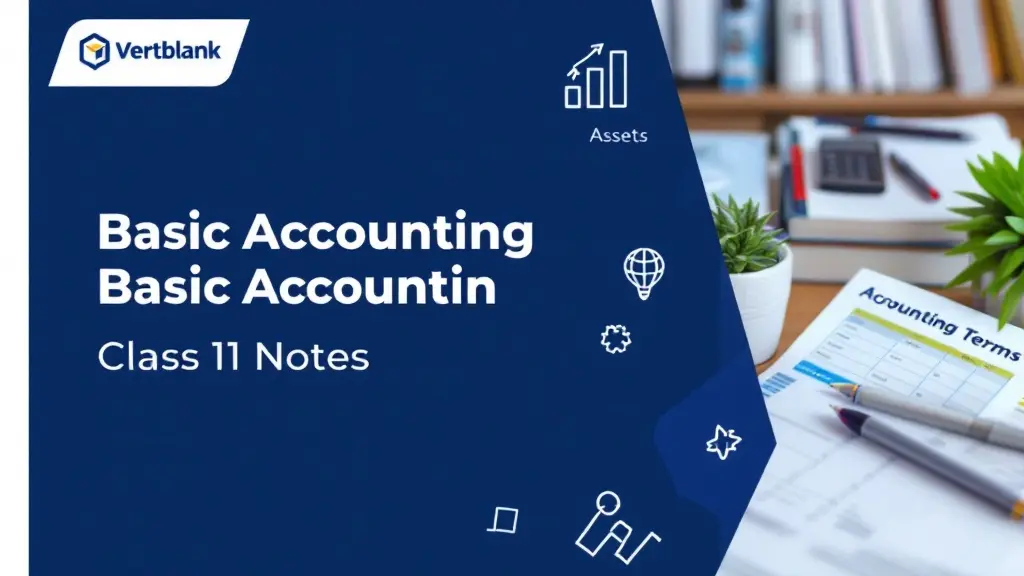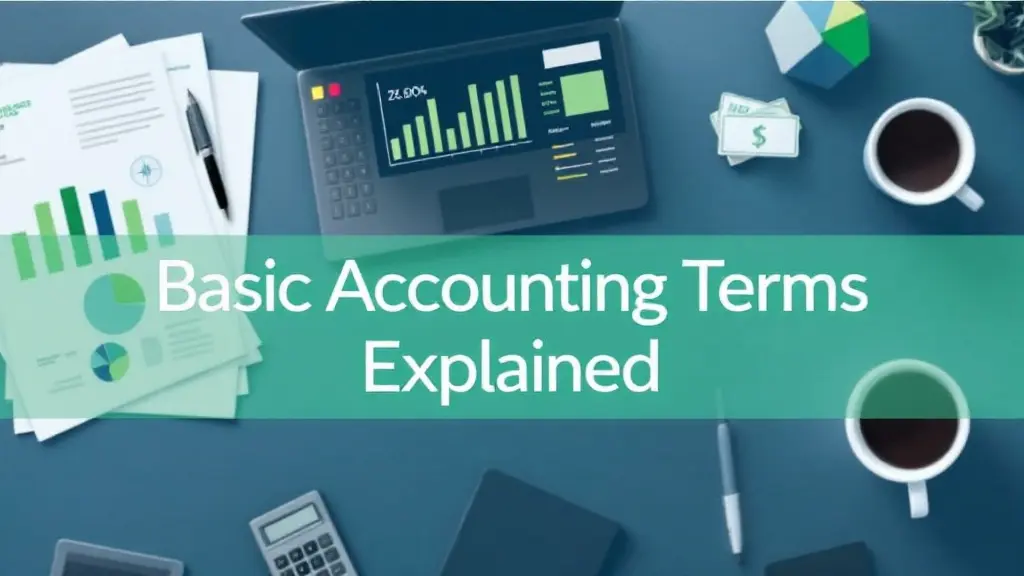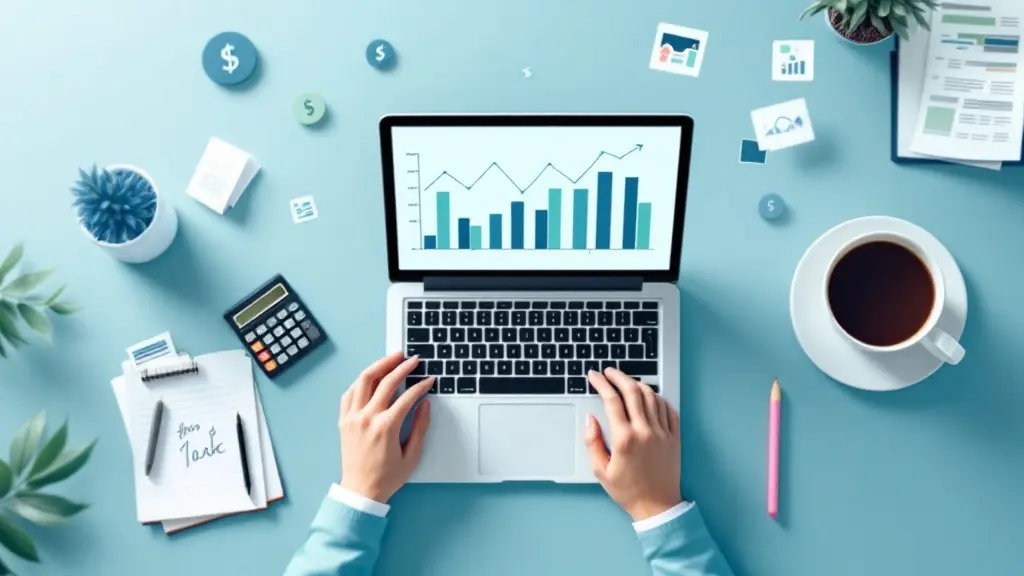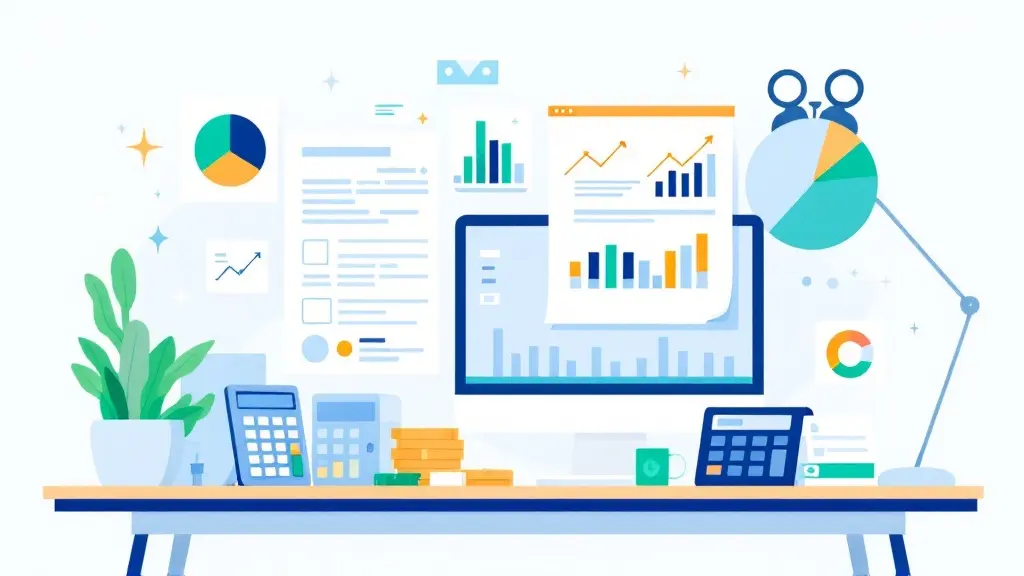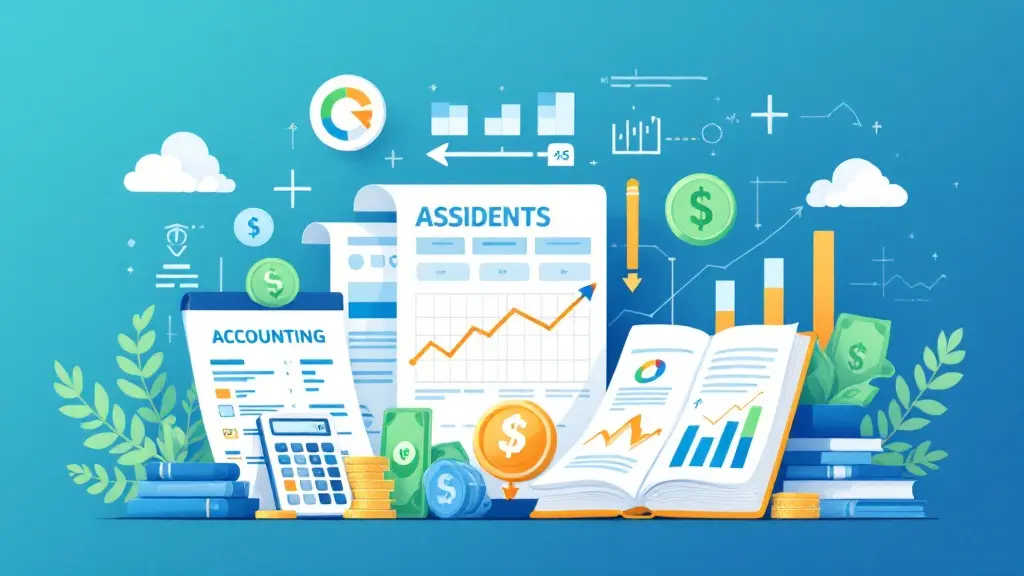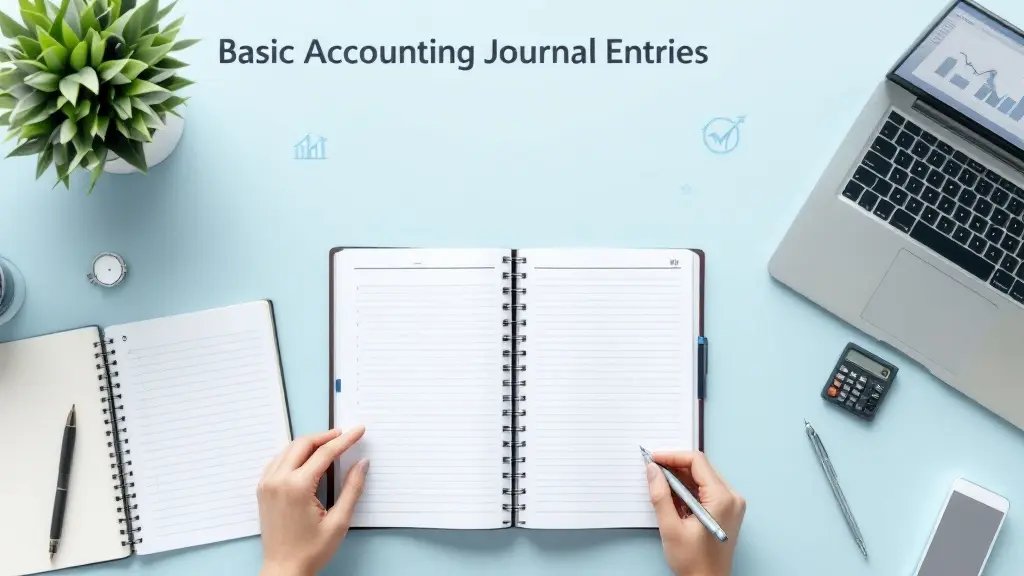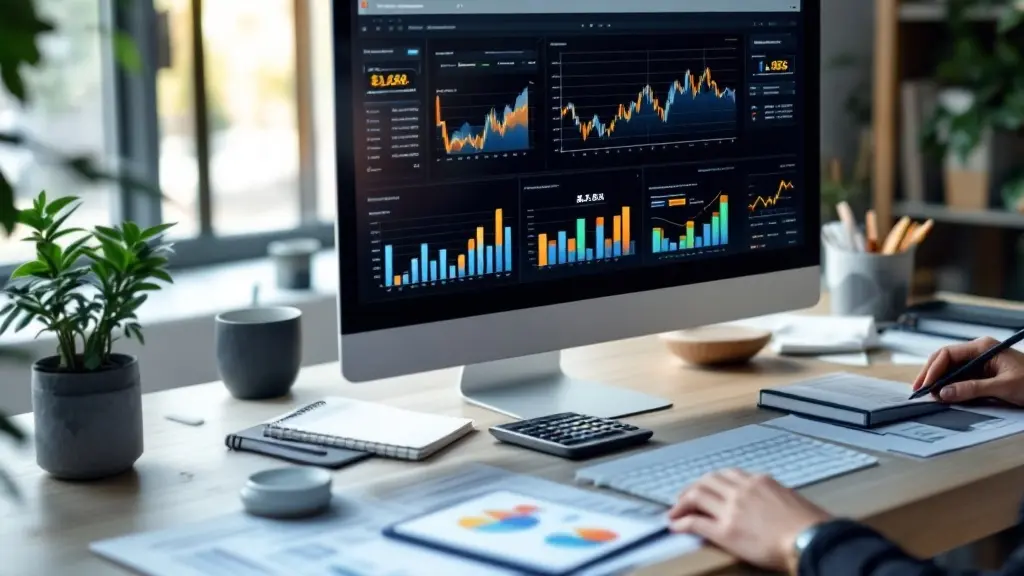Basic Accounting Terms Class 11 Notes: Your Complete Guide to Understanding Key Concepts
Table of Contents
Most Read
[fusion_dropcap class="fusion-content-tb-dropcap"]A[/fusion_dropcap]ccounting forms the backbone of the financial world, whether for individuals, businesses, or governments. As Class 11 students, understanding the basics of accounting is crucial because it sets the foundation for more advanced topics in later classes. If you’re new to the subject or need help revising accounting terms, you’re in the right place. In this blog post, we will break down the essential accounting terms that every Class 11 student should be familiar with.
Table of Contents
- What is Accounting?
- Key Accounting Terms Every Class 11 Student Should Know
- Assets
- Liabilities
- Capital
- Revenue
- Expenditure
- Account
- Types of Accounts in Accounting
- Personal Accounts
- Real Accounts
- Nominal Accounts
- Basic Accounting Equation
- The Accounting Cycle
- Why are Accounting Terms Important?
- Conclusion: Mastering Basic Accounting Terms for Class 11
What is Accounting?
Before diving into the specific terms, let’s briefly discuss what accounting is. At its core, accounting is the process of recording, summarizing, and analyzing financial transactions. It ensures that businesses can track their income, expenses, and assets, giving them a clear picture of their financial health.
For Class 11 students, accounting primarily focuses on the preparation and understanding of financial statements, such as the balance sheet and profit & loss statement. Mastering accounting terms will make it easier to comprehend these statements and perform well in exams.
Key Accounting Terms Every Class 11 Student Should Know
In accounting, there are several essential terms that form the building blocks of the subject. Let’s take a closer look at the most common ones:
1. Assets
An asset is anything of value that a business or individual owns. Assets can be either physical or intangible and are essential for generating revenue.
- Types of Assets:
- Current Assets: These are assets that can be converted into cash within a year, such as cash, accounts receivable, and inventory.
- Non-Current Assets: These are long-term assets that are not expected to be converted into cash within a year, like property, equipment, and intangible assets (e.g., patents).
2. Liabilities
A liability refers to an obligation that a business owes to an external party, often resulting from borrowing money or receiving services. Liabilities are classified as either current or non-current.
- Types of Liabilities:
- Current Liabilities: These are debts that must be paid within a year, such as accounts payable or short-term loans.
- Non-Current Liabilities: These are long-term debts that are not due within a year, like long-term loans or bonds payable.
3. Capital
Capital refers to the financial resources invested in a business to fund its operations and growth. It can come from the owner’s personal savings, loans, or investors. The capital is crucial for starting and sustaining a business.
4. Revenue
Revenue refers to the total amount of money a business earns from its activities, primarily through the sale of goods or services. It is also referred to as income or sales revenue.
- Revenue Types:
- Operating Revenue: Money earned from the core business operations.
- Non-Operating Revenue: Earnings from secondary activities, like investments.
5. Expenditure
Expenditure is the money spent by a business in the process of earning revenue. It includes expenses like rent, salaries, utilities, and materials. These costs are essential for day-to-day operations.
- Types of Expenditures:
- Capital Expenditure: Investments in long-term assets, such as purchasing machinery or property.
- Revenue Expenditure: Costs incurred for regular operational activities, such as paying rent or employee wages.
6. Account
An account is a record of all the financial transactions related to a specific item, such as a particular asset, liability, income, or expense. Each business transaction is recorded in an account under the relevant category.
Types of Accounts in Accounting
In accounting, transactions are recorded in different types of accounts. The three main types of accounts are:
1. Personal Accounts
Personal accounts represent individuals, companies, or organizations with whom the business has dealings. There are two types of personal accounts:
- Natural Persons: Accounts that relate to individual people, such as customers or suppliers.
- Artificial Persons: Accounts for entities like companies or organizations.
2. Real Accounts
Real accounts represent assets, such as cash, buildings, and machinery. Real accounts are further classified into two categories:
- Tangible Real Accounts: Physical assets like land, machinery, and inventory.
- Intangible Real Accounts: Non-physical assets such as patents and trademarks.
3. Nominal Accounts
Nominal accounts represent expenses, losses, incomes, and gains. These accounts are temporary in nature and are closed at the end of the financial year. Examples include rent expense, salary expense, or sales revenue.
Basic Accounting Equation
The basic accounting equation is the foundation of double-entry accounting. It ensures that a company’s balance sheet is always in balance. The equation is:
Assets = Liabilities + Capital
This equation reflects the relationship between a company’s resources (assets), what it owes (liabilities), and the investment made by its owners (capital). By understanding this equation, students can grasp how transactions affect a business’s financial position.
The Accounting Cycle
The accounting cycle refers to the process of recording, summarizing, and analyzing financial transactions to prepare financial statements. It involves several steps:
- Identifying Transactions: The first step is to identify and analyze business transactions.
- Recording Transactions: Transactions are recorded in journals, using the double-entry system.
- Posting to Ledger: The journal entries are posted to the general ledger accounts.
- Trial Balance: A trial balance is prepared to ensure that debits equal credits.
- Adjusting Entries: Adjustments are made for expenses or revenues that haven’t been recorded yet.
- Preparing Financial Statements: The income statement, balance sheet, and cash flow statement are created.
- Closing Entries: Nominal accounts are closed to prepare for the next accounting period.
Why are Accounting Terms Important?
Understanding accounting terms is vital for several reasons:
- Clarity in Financial Reporting: Accurate knowledge of accounting terms ensures that financial statements are prepared correctly.
- Exam Preparation: For Class 11 students, mastering these terms is essential to perform well in exams. They help you understand how to solve problems related to financial transactions, adjustments, and statements.
- Real-World Application: These terms are used universally in the business world. Understanding them prepares you for real-world financial activities and helps you manage finances, whether for personal use or in business settings.
Conclusion: Mastering Basic Accounting Terms for Class 11
Accounting may seem challenging at first, but with the right understanding of basic terms, it becomes a manageable subject. From assets and liabilities to accounts and the accounting equation, each concept plays a key role in understanding how businesses manage their finances.
As you continue your journey in accounting, these foundational terms will help you analyze financial statements, solve problems, and apply accounting principles accurately. With consistent practice and revision, you’ll soon find yourself mastering these key concepts and building a solid foundation for more advanced topics in accounting.
Good luck with your studies, and remember that understanding these basic accounting terms is the first step toward becoming proficient in the subject!
Visit Our Website : Accounting.in
